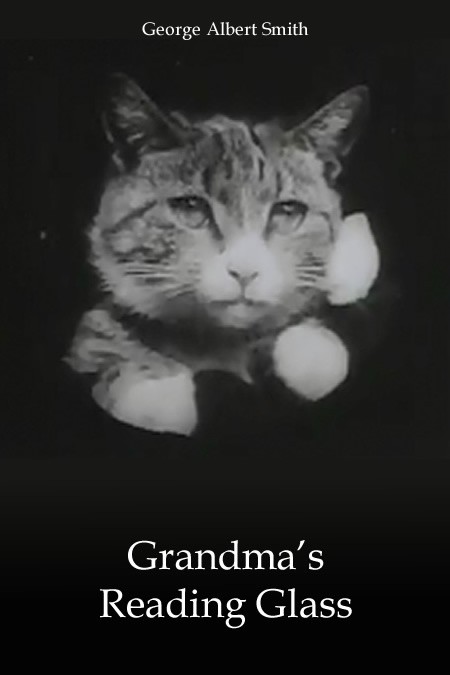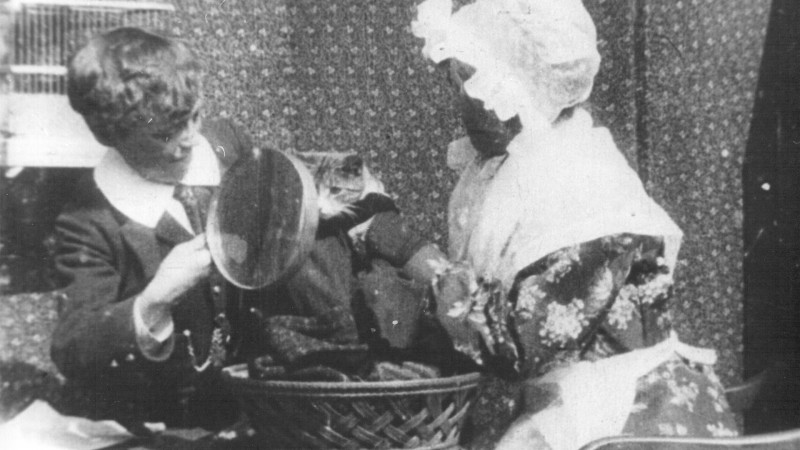Grandma’s Reading Glass

Grandma’s Reading Glass is a film apparently easy to make, but for the time actually quite complex. First, the amount of shots: 10, alternated between the use of the first-person (with black mask circular lens, to emulate the magnifying glass) and a mean field that shows the grandmother with the grandson that are watching some subjects. Thanks to this alternation, Smith manages to build a logical connection between the shots.
The film is very important for the history of cinema, in particular because it was the first ever to present the point-of-view close-up, a kind of shot from the point of view of one of characters from the film. In this case the boy turns from a character into a cinematographer. The camera almost acquires life in the body of the young boy, becoming an extension of his body: his eyes. The final effect is absolutely amazing.
Besides the lack of a narrative level, the obvious limitation of the film is the approximate yield of the prospect. The scenes in the foreground are not absolutely proportional to how they would appear in real life. The boy looks at the canary and then the eye of his grandmother from the same distance, but they are rendered totally different (from near the eye of his grandmother and from far the canary).
Grandma’s Reading Glass is also the first film to show a kitten on the screen. Smith resurface the kitten making him the protagonist of another film that enjoyed considerable success, The Sick Kitten in 1903.
